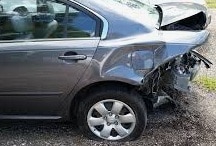Before entering fully into the meaning of the term casual nexus, we are going to proceed to know the etymological origin of the two words that give it shape:
-Nexus, first of all, derives from Latin. Specifically, it emanates from “nexus”, which can be translated as “bound”.
-Casual, secondly, also comes from Latin. In his case, “casualis”, which is equivalent to “what is related to what happens and cannot be avoided.” A word that is the result of the sum of the following lexical components: the noun “casus”, which is equivalent to “luck” or “chance”, and the suffix “-al”, which is used to indicate “relative to ”.
The notion of nexus is used to refer to that which links or connects . It is common for the concept to be used in the field of grammar , although it can also appear in other areas.
In the aforementioned field of grammar, we speak of casual connection to refer to those also known as casual conjunctions. These are words that are used in subordinate clauses to unite what are prepositions and also explain the cause of the main clause.
As a general rule, the most significant casual links are “because” and “because”. However, there are others such as “on the occasion of”, “because of”, “as”, “since”, “since” or “since”. An example would be: “I practice swimming because it is beneficial for my back.”
 In the legal field, we find the idea of causal link . This is the relationship between an illegal action or omission and the damage it causes, giving rise to responsibility and, as a consequence, the obligation to compensate .
In the legal field, we find the idea of causal link . This is the relationship between an illegal action or omission and the damage it causes, giving rise to responsibility and, as a consequence, the obligation to compensate .
The causal link is the most important element of civil liability . Experts define it as the cause-effect link that triggers the procedure.
The illicit civil act and the damage that said act causes are linked by the causal link. Without that link, responsibility for the damage cannot be placed on the person who committed the act in question.
The antecedent that causes the result is the cause of the effect . The causal link, in short, connects the action with the damage . It is important to keep in mind that, for civil liability to exist, the cause must be foreseeable (the subject could foresee it) and avoidable (the subject could prevent its occurrence).
Suppose a motorist brakes at a red light . While stopped, he is hit from behind by a driver who, distracted by sending a message with his cell phone, did not stop driving. Due to the crash, the subject who was in the impacted vehicle suffered an injury to his neck. As there is a causal link between the collision and the physical problem suffered by the victim, the individual who was reckless by driving without respecting traffic rules is responsible for the damage.
In addition to everything indicated, it is important to know that there are two circumstances that can exonerate the cause of the damage from civil liability. We are referring to the fortuitous event and force majeure.
